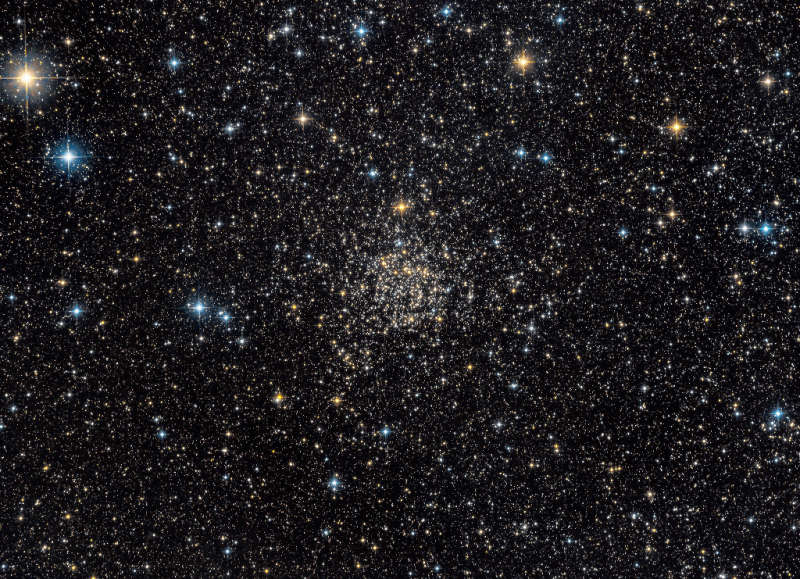Credit & Copyright: Guillaume Seigneure
Explanation:
Found among the rich starfields of the Milky Way,
star
cluster NGC 7789 lies about 8,000 light-years away
toward the constellation Cassiopeia.
A late 18th century
deep sky discovery of astronomer
Caroline Lucretia Herschel,
the cluster is also known as Caroline's Rose.
Its flowery
visual appearance
in small telescopes is created by
the cluster's nestled complex of stars and voids.
Now estimated to be 1.6 billion years young, the
galactic or open cluster of stars also shows its age.
All the stars in the cluster were likely born
at the same time, but the brighter and more massive ones have more
rapidly exhausted the hydrogen fuel in their
cores.
These have evolved from
main sequence
stars like the Sun into the many red giant stars shown with a
yellowish cast in this lovely color composite.
Using measured color and brightness,
astronomers can model the mass and hence the age of
the cluster stars just starting to "turn off" the main sequence
and become red giants.
Over 50 light-years across,
Caroline's Rose spans about
half a degree (the angular size of the Moon) near the center of
the
wide-field telescopic image.
1999 2000 2001 2002 2003 2004 2005 2006 2007 2008 2009 2010 2011 2012 2013 2014 2015 2016 2017 2018 2019 2020 2021 2022 2023 2024 2025 |
Январь Февраль Март Апрель Май Июнь Июль Август Сентябрь Октябрь Ноябрь Декабрь |
NASA Web Site Statements, Warnings, and Disclaimers
NASA Official: Jay Norris. Specific rights apply.
A service of: LHEA at NASA / GSFC
& Michigan Tech. U.
|
Публикации с ключевыми словами:
stellar evolution - Рассеянное скопление - Эволюция звезд - возраст звезд
Публикации со словами: stellar evolution - Рассеянное скопление - Эволюция звезд - возраст звезд | |
См. также:
Все публикации на ту же тему >> | |
